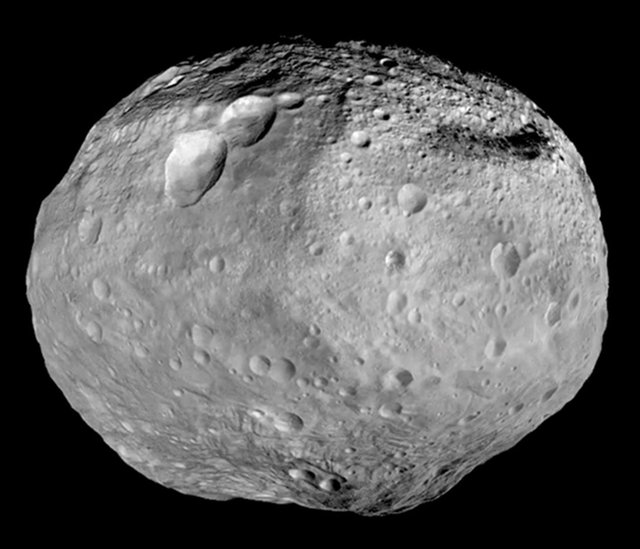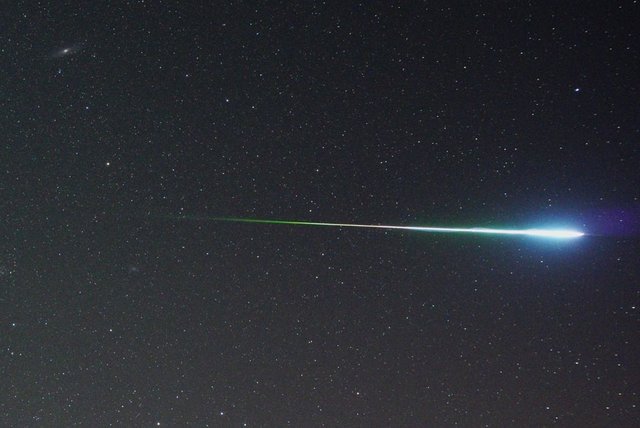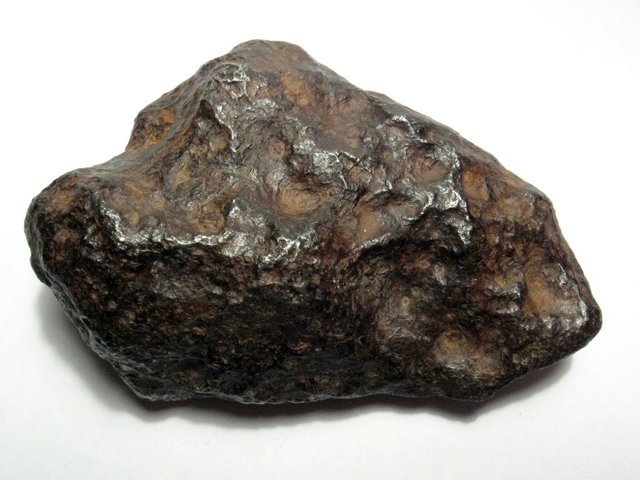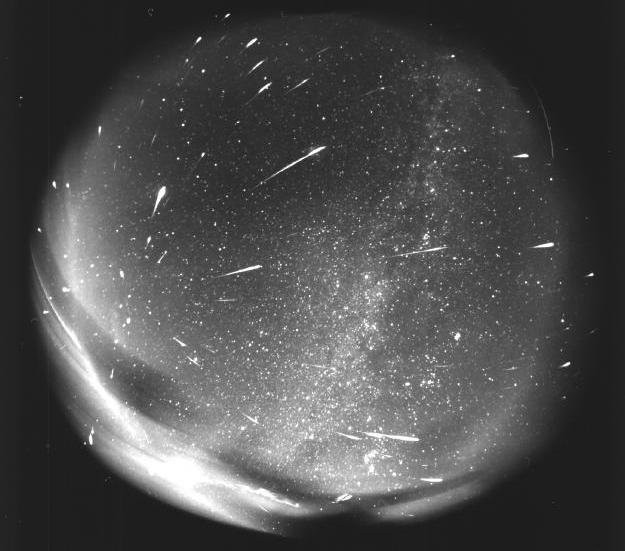Cosmic rocks: Asteroids and meteoroids
In our solar system there are millions of rock bodies of varying sizes, ranging from a small grain of sand to huge objects with a diameter of up to 1,000 kilometers!

By NASA/JPL link [Public domain]
Asteroids are the largest of cosmic rocks. These are objects devoid of atmosphere with quite a large diameter, reaching the size of moons of some planets. Asteroids were created in the belt between Mars and Jupiter. Probably gravitational interactions of Jupiter caused that the rock matter of this belt never formed a single, larger body. It is estimated that if from all this matter a single planet would be formed, its diameter would be 1500 kilometers, i.e. half of our Moon. Maybe it isn't much, but the diversity of sizes of these objects causes that there are many of them. Today we know more than 790 thousand asteroids!

By NASA/JPL-Caltech/UCAL/MPS/DLR/IDA link [Public domain]
Already in the early nineteenth century, the first four largest asteroids were discovered. These were Ceres with a diameter of 913 kilometers, Pallas (523 km), Vesta (520 km) and Juno (234 km). Today we know that there are 16 asteroids with a diameter of over 240 kilometers. Most of them orbit the Sun in the asteroid belt and it takes them depending on the location from 3 to 6 years old. Scientists divide asteroids into groups due to their chemical composition and their ability to reflect sunlight. The three main types of these objects are: Type C, or dark carbon asteroids that dominate. It is estimated that they constitute about 75% of all asteroids. Type S is created from rocks with iron and that make up 17% of cosmic rocks. The M type is also observed, which contains 8% of asteroids, mainly made of iron.

By Mdf at English Wikipedia link [Public domain]
In addition to the asteroid belt, asteroids occur elsewhere in the Solar System. Two groups of asteroids circulate with Jupiter on its own orbit. One group moves in front of the largest planet, the other behind it. Asteroids from these groups were called Trojans and divided into two parts: the Trojan Camp and the Greek Camp. Other asteroids move their independent orbits and often lead quite close to the Earth. If they approach the Sun at a distance of less than 200 million kilometers, then we call them asteroids close to Earth. Many of them cut through our Earth's orbit. Most of those over 100 meters in diameter are being watched all the time, but many smaller ones can surprise us at any moment.

By Siarakduz link [CC BY-SA 4.0 license]
There are also smaller objects than asteroids. Our planet is constantly bombarded by thousands of meteoroids, small rocks. They contain grains of sand and boulders the size of a car. When they enter the Earth's atmosphere, they create the phenomenon of a meteor, or a light trace in the sky. They are colloquially called falling stars. Those objects that managed to reach the surface of the earth were given the name of meteorites. You can find such a cosmic rock by yourself or see it at geological exhibitions. These objects are usually fragments of larger asteroids, rarely the remains of comets flying near the Earth.

By H. Raab link [CC BY-SA 3.0 license]
The most common are stone meteors built mainly of silicates. Meteorites made of iron and nickel appear less frequently. The least common are mixed meteorites, containing rocks and iron. Meteors in the night sky are formed about 100 kilometers above the Earth's surface. Their speed is huge and usually ranges from 10 to even 70 kilometers per second! Those larger under the influence of friction temperatures usually explode at high altitude. They then divide into small fragments and leave large amounts of smoke. This was clearly visible during the explosion of the Chelyabinsk meteor.

By Juraj Tóth link [CC BY-SA 3.0 license]
Usually during the clear night you can see about 5 meteors within an hour. Several times a year are visible meteor showers. They arise when the comet approaches the sun, which causes it to heat up and create a long braid. When will be found by vicinity of our planet, it results in the appearance of beautiful phenomena in the sky. The names of the meteor showers come from the constellation, which usually appears on the background. Many of the meteors in such a shower are very weak objects that require a dark sky. The most spectacular meteors showers are Perseids (the constellation Perseus), Leonids (the constellation Leo) and Geminids (the constellation of Gemini).
Greetings to lovers of Astronomy!
References:

Thanks for braking down all the info on Asteroids and meteoroids, They fascinated me as a kid. :-)
You're welcome :) I also like this subject and already as a child I liked to watch the night sky. Meteorites are a beautiful phenomenon.
It's good to know what is flying over us though it is far away. Thanks for the message Astromaniak.
Nice read @astromaniac. Thanks for sharing.
This post has been voted on by the SteemSTEM curation team and voting trail in collaboration with @curie.
If you appreciate the work we are doing then consider voting both projects for witness by selecting stem.witness and curie!
For additional information please join us on the SteemSTEM discord and to get to know the rest of the community!